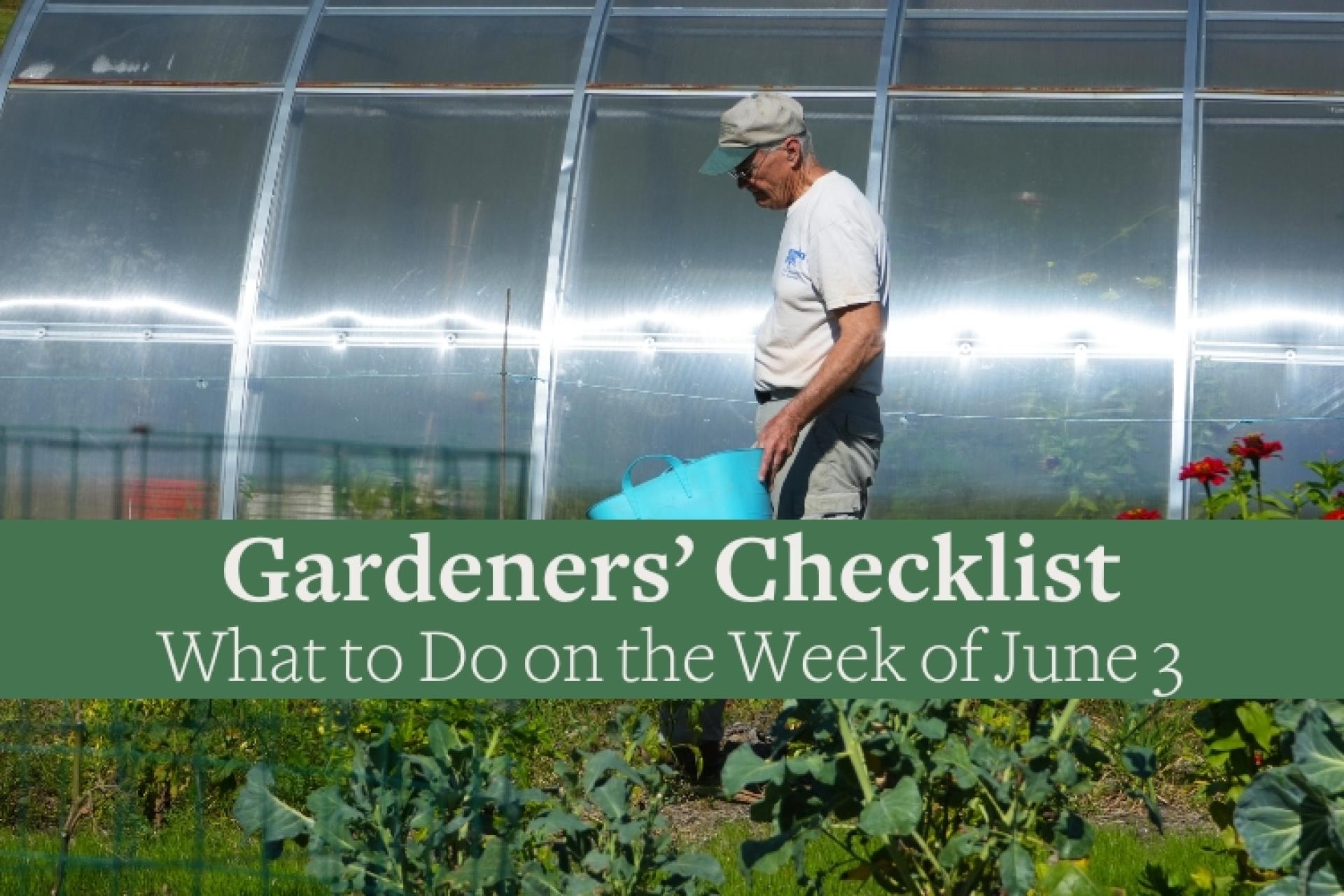You are here
Gardeners Checklist: Here Is What to Do on the Week of June 3
Gardeners Checklist: Here Is What to Do on the Week of June 3
By Ron Kujawski
* Don’t get your knickers in a twist if you see shoot tips from maple trees strewn on the ground beneath the trees. This could be the work of squirrels who clip seed laden twigs, most likely to feed on the seeds and buds. There is no permanent damage to the trees. Common host plants for such squirrel activity include certain maples, American elm, and spruces.
* Place a lightweight row cover over potatoes and eggplants to deter Colorado potato beetles, and over cabbage and related plants to keep adult moths of cabbage worms from laying their eggs on the plants. If beetles are already on potato and eggplants, handpick them. If cabbage worms are present on cabbage, broccoli, cauliflower, kohlrabi, etc., apply a product containing the biological insecticide Bt (Bacillus Thuringiensis) or neem oil according to the product label directions.
* Insert stakes next to tomato plants now if you were planning to grow the plants on stakes. There will be less probability of damage to roots if staking is done now. Wooden stakes are common but if you have a few plants, rebar can be used as stakes and will last forever.
* Stake tall growing perennials such as delphinium and hollyhock. Use green colored bamboo stakes or something that is as unobtrusive. For such tall plants, use one tall stake per stem.
* Snip a few outer leaves from kohlrabi to include in a tossed salad.
* Use a granular bait containing iron phosphate to control slugs and snails around ornamental and food crops.
* Prune the tip of the leader (main shoot) of white pine if it is wilting and drooping. Such flagging shoot tips are most likely infested by white pine weevil.
*
Powdery mildew is a fungus disease that appears as a dusty gray or white coating on leaves of a wide variety of ornamental and food plants in our gardens. Usually, we don’t see this disease until much later in the season. However, it has already appeared on ninebark (Physocarpus) and a few other plants in some gardens. Fortunately, it is not a disease which is difficult to control, if you are vigilant and keep after it. A combination of cultural methods and fungicide applications can prevent or eliminate powdery mildew in the garden. Culturally, avoid overcrowding of plants in the garden, and use watering methods that wet the soil and not the leaves of susceptible plants. If the disease appears, there are many control options. Commercial products containing neem oil, natural sulfur, or potassium bicarbonate are readily available and are very safe to use. A commonly used home remedy consists of a mixture of one tablespoon each of baking soda, vegetable oil, and dishwashing liquid in one gallon of water. Spray the infected plants with this mixture about every five to seven days. Damage to plant leaves can occur from this mixture if more than one tablespoon of baking soda is used or if the spray is applied in full sun. So, spray late in the evening or on a cloudy day.
Ron Kujawski began gardening at an early age on his family's onion farm in upstate New York. Although now retired, he spent most of his career teaching at the UMass Extension Service. He serves on Berkshire Botanical Garden’s Horticulture Advisory Committee. His book, Week-by-Week Vegetable Gardener’s Handbook, is available here.
Help Our Garden Grow!
Your donation helps us to educate and inspire visitors of all ages on the art and science of gardening and the preservation of our environment.
All Donations are 100 percent tax deductible.



